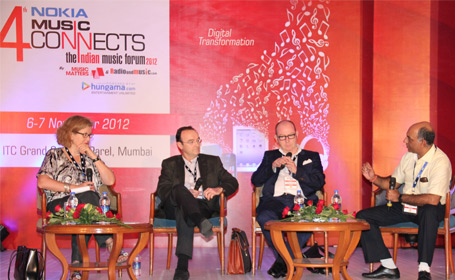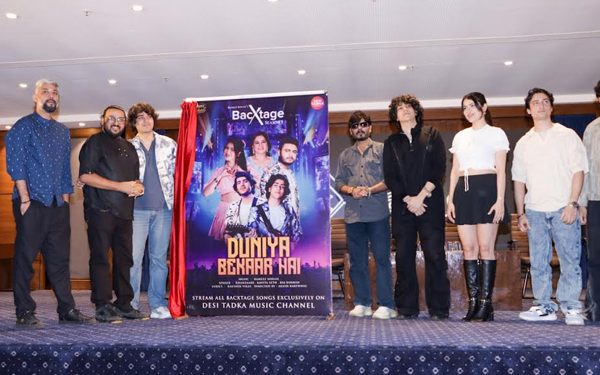MUMBAI: A panel of experts from the world’s leading music publishing houses demystified the copyrights business that has been a cornerstone of the industry, during a panel discussion ‘Lessons from Publishing’ at Radioandmusic.com’s Nokia Music Connects 4.
The panellists included Universal Music Publishing International Asia Pacific Region and Industry Affairs EVP Andrew Jenkins, Warner Chappell Music (UK) International Legal and Business Affairs SVP Jane Dyball and Sony/ATV Music Publishing International EVP Guy Hernderson.
At present, globally the copyright industry is worth USD 9 billion. At the heart of the business is an agreement between the owner of the song or music and the publisher to create and monetize the music. Depending on the material and the reach of the publisher, this piece of work can be monetized across the globe.
“While the business may seem complicated, it is built on simple deals between the creative and administrative sides of the music business- creating music and collecting money. The consumers are taken care of by the record labels,” Jenkins said.
The avenues for monetizing music are mainly through ‘mechanical royalties’ which were initially called royalties, that accrue whenever a song is reproduced by a mechanical device- phonographic to CDs on ‘per unit’ basis.
Synchronization licenses are given when the song is used with a visual image. Transcription Licenses are signed when a radio uses part of the song as part of its commercial and Print Licenses are issued for sheet music.
Basically, the writer of a song or musical work is paid a negotiated amount by the publisher every time his work is performed or played. However, it is difficult to calculate the revenues of even a hit song, although one can safely assume that artists like UK pop sensation Adele would be earning in millions, the panel members pointed out.
The global music publishing industry thrives on both – sophisticated software which can track the markets where an artist’s song is played around the world and the old fashioned haggling and negotiation to cut deals that make the multi-billion dollar industry work.
“Monetization of copyrights depends on different countries and different distribution networks and the artist or label. We represent T-Series so we earn money from day one,’ Jenkins informed.
“The money collected from territories is pooled to a central office, fees are deducted and payments are made to the publisher or artist,” Henderson said.
Warner Chappell Music (UK) runs expensive software to monitor its catalogue but publishers with a small catalogue could run it on an Excel Spreadsheet. “Signing a sub-publishing deal or an administrative deal are interchangeable terms. What this means is that a collection of writers needs to administer the categorization in a particular territory, usually a smaller one,” Dyball said.
Performance, which includes broadcasting, accounts for 55 per cent of revenues, synchronization and commercials form 15-20 per cent, physical products a little over 20 per cent with the Performing Rights Society (PRS) giving payment to the owner of the work. Most copyright agreements were for a duration of three years. “Data processing is the key. We are looking at building a centralized global data base,” Dyball informed.
“In the business, the publisher earns the same for a cover song as the original. The splitting of rights of the song into samples, clips and lyrics comes down to how the artists and publishers negotiate,” Henderson said.
For the music industry in India, the work-in-progress Copyrights Acts Amendment could help it emerge as a strong market for publishing rights.
The panel members said their respective companies were investing in the music rights spectrum in India and the country’s artistes stood a good chance to reap dividends from their works domestically and internationally. They said that although the Copyrights Act Amendment would change things, the players would be the same.
“We have been involved in representing Indian films outside India for the past five years. We are focusing on representing India rather than trying to sell international music which is a waste of time since the market for it is too small,” Jenkins said.
Warner Chappell Music (UK), which has tied up with Times Music for the Indian market is also here for the long haul. “What we are trying to do in India is to synchronize Bollywood and music, and we are working hard to get films and ads to use our repertoire. At the moment, we are representing our catalogue here. I see a lot of scope in the digital market and expect to acquire music in developing markets,” Dyball said. Henderson also confirmed that Sony ATV Music wanted to help develop Indian artists.













